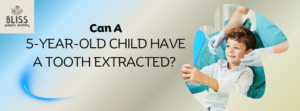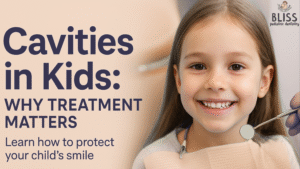Understanding Your Child’s Dental Milestones
Parents often wonder, “When do baby molars come in?” Knowing the molars baby teeth age helps you recognize normal development and identify early signs of potential problems.
According to Dr. Sucheta Budania a Best Pediatric Dentists in San Carlos, baby molars are essential for chewing, jaw alignment, and maintaining space for permanent teeth — making them a key milestone in your child’s smile journey.
What Is the Molars Baby Teeth Age?
Every child’s timeline is slightly different, but here’s the general schedule most pediatric dentists in the U.S. follow:
- First molars: Erupt between 13–19 months (upper) and 14–18 months (lower)
- Second molars: Appear between 23–33 months
By the age of three, most children have a full set of 20 primary teeth, including molars.
If your child’s molars are delayed or erupt unevenly, your child’s dental checkup can evaluate their growth and ensure everything is on track.
Why Are My Child’s Gums Bleeding?
It’s normal for bleeding gums in children to occur occasionally — especially when molars are coming in. The gums can become swollen, tender, or slightly irritated during tooth eruption.
However, bleeding can also be a sign of:
- Plaque buildup or gingivitis
- Aggressive brushing
- Vitamin deficiencies
- Poor oral hygiene habits
If your child’s gums bleed frequently or you notice swelling or redness, it’s time to schedule an appointment with a Pediatric Dentist in Redwood City. Early care helps prevent gum disease and keeps those new molars healthy.
How to Care for Baby Molars
Once your child’s molars appear, proper care is essential. Follow these tips from U.S. pediatric dental experts:
- Brush twice daily using a soft-bristled toothbrush and fluoride toothpaste (pea-sized for older toddlers).
- Floss daily once teeth start touching.
- Avoid sugary snacks and juices between meals.
- Encourage water as the main drink throughout the day.
- Schedule dental visits every six months for checkups and cleanings.
Your Pediatric Dentist in Belmont might recommend fluoride varnish or sealants to protect the molars from decay and strengthen the enamel.
What Does Dental Insurance for Kids Cover?
Many parents worry about dental costs, but most dental insurance for kids plans cover preventive care — often at no out-of-pocket cost.
Typical benefits include:
- Routine cleanings and exams
- Fluoride treatments and sealants
- X-rays and cavity checks
- Emergency visits for pain or injury
If you’re unsure about your coverage, your local Pediatric Dentist in San Carlos can help you understand your policy and file claims, ensuring your child receives top-quality care without financial stress.
Why Visit a Pediatric Dentist in San Carlos
A Pediatric Dentist in San Carlos specialises in children’s oral health — from teething babies to teens. They provide gentle, personalized care that focuses on prevention, education, and comfort.
When choosing a dentist for your child, look for:
- Certified pediatric specialists
- Kid-friendly office environment
- Modern, pain-free treatment methods
- Clear communication about insurance and treatment options
Regular visits ensure your child’s molars erupt correctly, gums stay healthy, and small issues are caught early.
Key Takeaways
- Molars baby teeth age: First molars erupt around 13–19 months; second molars between 23–33 months.
- Bleeding gums in children: Can be normal during eruption but should be checked if persistent.
- Dental insurance for kids: Covers preventive care like exams, fluoride, and sealants.
- Pediatric Dentist in San Carlos: Offers expert, compassionate care for your child’s growing smile.
Final Thoughts
So, when do molars come in for babies? Around 1 to 3 years old — but every child is unique. Regular dental checkups with a trusted Pediatric Dentist in San Carlos ensure your little one’s molars develop properly and stay strong for years to come.



